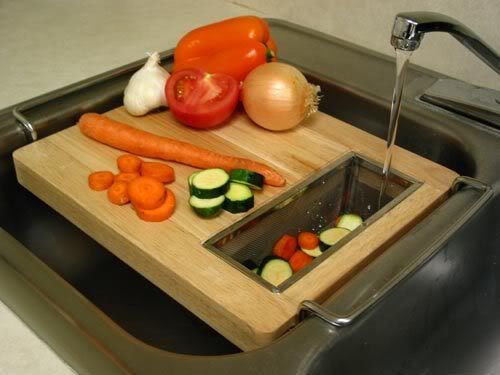When I was growing up, I must have driven my mom and dad crazy.
While my brothers were involved in things such as auto repair, music and sports, I spent quite a bit of time relaxing, watching TV and just hanging around. In other words, I had very few hobbies I wanted to pursue. Since both of my parents kept exceptionally busy with yard work and other necessary home jobs, I was often encouraged to get off my duff and take up some activity to build my interest and keep me active.
Boy, have the times changed.
Today, my wife has to caution me to take things a little easier and find some time to relax. I can’t help myself, because the hobbies I found an interest in are just so darned interesting. I’m writing, reading and studying the weather. I’m watching old movies. I’m even home-brewing beer.

And, my three favorite hobbies are woodworking, food and wine.
Talk about three fields of interest where you can study for years and never discover all of the nuances. New and exciting wines from nearly all corners of the world are popping up on specialty store shelves. Some wines can even vary tremendously from the same stretch of sunny river valley depending on how much sunlight they get or the composition of the soil.
Foods from around the world illustrate different cultures’ views of taste and the evolution of their ingredients. Even something as simple as pasta has hundreds of different iterations – from udon noodles in Japan to the familiar spaghetti with meatballs my mom makes.
And, woodworking… well… the selection of furniture styles (Shaker, modern, Chippendale), building materials (plywood, hardwoods, exotics) and tool choices (table saw, band saw, lathe) alone can keep your average woodworker busy for decades.
However, the more I learn about these three hobbies, the more amazed I am about how tied together they really are. In fact, many aspects of what we eat and drink owe their existence and unique characteristics directly to their contact with wood.
Of course, there are the completely obvious examples. Tree fruits (apples, cherries, peaches, olives) and spices (nutmeg, cinnamon, allspice) simply wouldn’t be if they didn’t have the trees they grew on. And, once those trees have finished their long, productive lives, many of them find their way into workshops around the world to start their next life as a beautiful piece of furniture.

In the days before cardboard, airtight cryopacks and other modern packaging methods, wood built the containers of choice for carrying foodstuffs. Crates, casks and barrels were all made of wood, and these durable containers served well for many years.
In fact, one of the ‘goofs’ listed for the movie The Godfather was that during the scene where Don Vito was shot during an assassination attempt, the oranges he spilled out onto the ground came out of a cardboard box… not the standard wooden crate that would have been used during that era.
The skill of the cooper – or barrel maker – was exceptionally important in days past, and still is now. Any food item that primarily a liquid or a fine powder that could leak out had to be contained in a relatively water-tight container. Flour, corn meal, salt pork and beef were stored in barrels, and some of my earliest memories of going to lunch with my dad involved fishing pickles out of a brine-filled barrel at a New Jersey deli.

The relationship between beverages and wood is legendary. Modern steel beer kegs may have replaced wooden barrels, but the romance of tapping the wooden keg is still strong. Even though the beer may come from modern tanks to ensure the product’s freshness, many microbreweries will decorate their establishments to at least make it appear the beer is still tapped straight from the barrel.
One large American beer company even goes so far as to advertise their brew Beechwood Aged. It is what it sounds like – the young beer is pumped into a large lagering tanks with beech chips which affects the flavor of the final product.
Wine and spirits, on the other hand, are frequently aged in wooden barrels which impart unique taste and color components to the beverage. Bourbons, Scotches and other Whiskeys come from the still as clear as vodka, but gain their characteristic brown shade from interaction with the wood in the barrels.

Many red wines and a few white varieties (particularly wines made from the Chardonnay grape) add layers of complexity when allowed to age in oak barrels. The vintner can fine-tune the flavor of the wine by carefully controlling how much time it spends in the barrel. Italian and Spanish wine makers are even required by law to age any wines labeled Reserva in oak casks for a minimum of an additional year to concentrate the flavors and further mellow the wine. Gran Reservas require a minimum of at least three years in the casks to earn that designation.
Then, there is food preparation. The first chopping boards ever used may have been the stumps of downed trees. Those later evolved to sawn tree rounds and then to large butcher blocks made of end or edge grained hardwoods. Apprentice butchers would often buy a butcher’s block and use it throughout their entire careers, planing the surfaces smooth after they became heavily worn.

And, just think, I haven’t gotten to wooden bowls, serving utensils, rolling pins or any of the dozens of other kitchen implements that can be made out of wood.
The next time you are in the kitchen preparing a meal and sipping one of your favorite beverages, stop and think for a minute about the inseperable ties between food and wood. They are very, very good.

Tom
Excellent article love the way you tied your intersts together – made for a good read
Joe
Thanks, Joe. This one was suggested by my wife… she likes when I cook. 😀